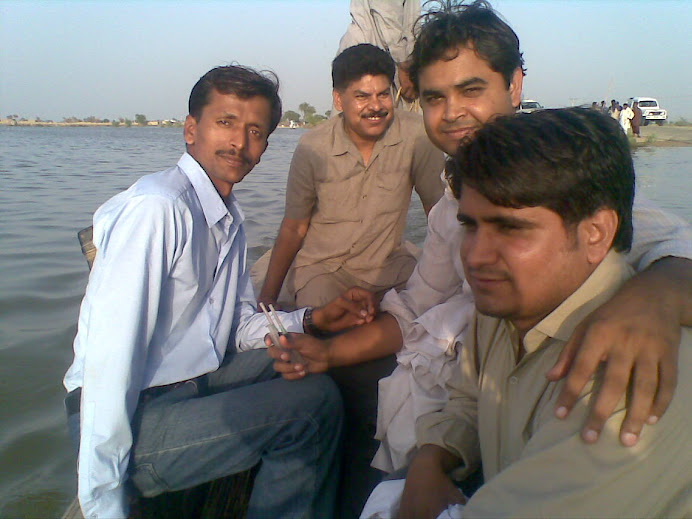



Livestock play an important role in Pakistan and generates about 30 to 40 percent income by rearing cattle, Kundhi buffaloes, sheep and goats. Livestock is a potential economic source for 30-50 million of total rural population of Pakistan. There are about 27.3, 29.6, 53.8, and 26.5 million heads of Kundhi buffalos, cattle, goat and sheep respectively. Livestock contributes about 50% of agricultural value added and 11 percent to GDP. Meat and milk produced by Kundhi buffalos and cattle provides 70 % animal protein thus it is considered to be major source for human diet. It has been estimated that these animals produced 33.2 million tons of milk, 1.27 million tons of beef and 0.82 million tons of mutton during 2006-2007 (GOP-2007). Goat has a unique importance in livestock due to its exceptional qualities such as high fertility, short kidding interval, good mutton quality, milk and hairs. There are thirty nine breeds of goats in Pakistan out of which twelve belongs to Sindh province viz.; Kamori, Bari, Bugi Toori, Bujri, Chapper, Jattan, Kacchan, Kurri, Lohri, Pateri, Tapir, Teddy, and Thari. These are mostly grazed in mixed herds in which only one or two healthy bucks are kept to impregnate all goats. Mostly cross breeding between small, medium and large goats produce obstetrical problems and dystocia. Dystocia mostly occurs in goats due to small birth canal, uterine torsion, oversized fetus and incomplete relaxation of birth canal. Dystocia can be relieved by different obstetrical methods. The efficiency of the natural parturition forces can be increased by using tissue estrogens or by augmenting the expulsive power of uterus using oxytocin. The traction or vigorous manipulation may cause rupture of thin uterine wall in small size goats. Cesaerotomy is preferable technique for the delivery of fetus in these conditions.
CASE HISTORY:
A two years old 25 kg black colored goat was referred by Dr. Muhammad Uris Samo, Ex-Professor, Department of Animal Reproduction to the Hassanian Veterinary Clinic with a complain of dystocia at 8:30 p.m. on 23-01-2010. The goat was presented with a foetus having two fore legs expelled out through vulva. Physical examination revealed that the head is deviated to ventral direction in the pelvic cavity. Clinically goat was normal with 1030F. Persistent straining had started 12 hours before examination to expel out fetus. Owner has pulled out forelegs of the fetus through vulva but head is deviated to pelvic cavity. She was unable to give birth to the fetus. Owner was surprised on the recommendation of c-section. He was first time referred for c-section in goats. Whereas, surgeon has done one hundred twenty cases in goats, 4 cases in sheep, four cases in buffaloes, two cases in donkey, four cases in deer, eight cases in bitches, ten cases in cats etc. and all will be reported time to time on this web site.
OPERATIVE TECHNIQUES:
Goat hairs from site were clipped and high epidural and L-shaped local anaesthesia with xylocaine was administered. Animal was placed on lateral recumbency on floor. Owner has restrained the goat from hind and forelegs where Mr. Junied Keyani, students of Fourth Prof. D.V.M. and Mr. Hafiz Asif, Student of 3rd Prof. D.V.M. have assisted me. The left flank site was prepared for aseptic surgery as per routine. The incision was performed in the left flank area, where the muscular layers of externus oblique muscle, internus oblique muscle and transverse muscles were opened with blunt dissection and separated. After parietal peritoneum was opened and cranial portion of the uterus was exteriorized. Incision was given in the longitudinal line on dorsal surface of uterine wall. The posterior limbs of foetuses were grasped and two live fetuses were removed along with placenta. Uterine passaries were placed in the uterus. Incision of uterus was closed with Connell suture technique. All the blood clots were removed from the uterus before it was replaced into abdominal cavity in it’s normal position. Closure of abdominal wall was carried out in three layers. Peritoneum was closed with simple interrupted sutures using 2/0 chromic catgut. The muscular and subcutaneous layers were apposed with simple continuous sutures using 2/0 chromic catgut. Skin incision was closed with simple interrupted suture technique using 1/0 nylon.
Post-oprative care:
Inj: trioxyl LA 5 ml and Inj: Phenylbutazone 3 ml was administered Intra-muscularly for three days post operatively. On follow up observation defaecation, urination, rectal temperature, pulse rate, respiratory rate, intake water, and feed returned to normal within 5 hours.
.jpg)



Salaam,
ReplyDeleteExcellent blog. Hope you continue to post other case studies.
Cheers,